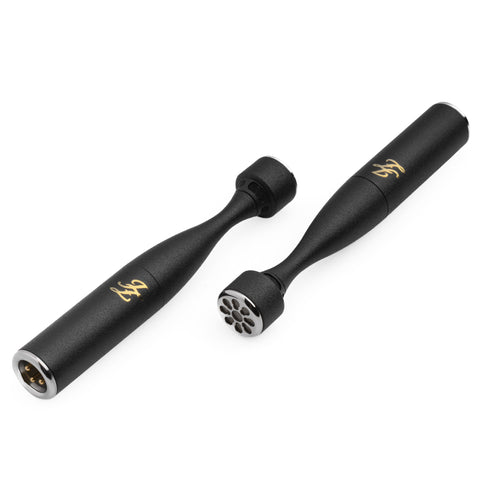Hello, and welcome to the bonus round of the blog this week! Today, we add the last installment of our focus on the Vintage Series Breakdown and it's a special one today as we finally come around to talk about the newest and shiniest addition to the bunch - the BT202 pair.
I personally adore these microphones, and they were the first microphones I wanted to try out when I first joined JZ Mics, however, I instead had to settle for the BT301 Pair (still just as incredible I might add!) as when I joined, the previous version of these mics, the BT201 pair, had been decommissioned just prior to me joining the team. But they’re back and better than ever, and today we’re going to talk about what makes them so great.
Let’s dive in!
Smaller Capsules, more Accuracy
There’s a common misconception that small diaphragm condensers are thin sounding and lack warmth and body; granted some are, but they’re the sort of microphone we strive to be as far away from as we can be! The thing that actually is the largest difference between small diaphragm condensers compared to their larger counterpart, is actually the phase accuracy of the capsule and more importantly, our interpretation of that fact.

SDC microphones are naturally more phase accurate in their design, but we’ve grown accustomed to the warmth that LDC microphones inherently have, so a lot of people steer more towards large capsule designs for that very reason - and naturally, we like warm full bodied sounds, mixes, instruments, etc. so it makes sense to pair them with that type of microphone. However, that can sometimes be a crux and oftentimes, I find that the main issues on someone else’s recordings and sometimes my own, are oftentimes in the lower spectrum of frequencies.
Articulation and Precision
Possibly the main thing that most engineers consider to be the strong point of using SDC mics is that they have a very precise sound, and in the case of the BT202 pair, there’s no exception either. In fact, compared to the other SDC pairs I have used over the past few years, I appreciate that these microphones aren’t hyped up unlike many others on the market - there’s no brittle or harsh top end, or piercing presence frequencies even when you place the 202’s as a pair of overheads with bright cymbals, or use a acoustic guitar with brand new strings and it’s a super bright sound in the room; the BT202 softens without losing any detail, and articulates the sound in a pleasing manner.
I remember way back in 2015 when we recorded with another engineer who had used a pair of SDC microphones as overheads for my band, and the high-end was unbearable until we tamed the mix ourselves - if we had had the BT202 pair instead, we would’ve save so much time and hassle (and probably added some extra years back to my hearing abilities too). But speaking of having them as a pair of overheads, that’s one of the main benefits to the BT202 pair aside from the sound quality.
Their unique design allows for tight fitting spaces and an insane amount of ways to place them when doing any sort of stereo recording. Mixbus TV has a great video not just demonstrating the microphones, but also the many ways to set them up for stereo applications and why you might choose each one:
